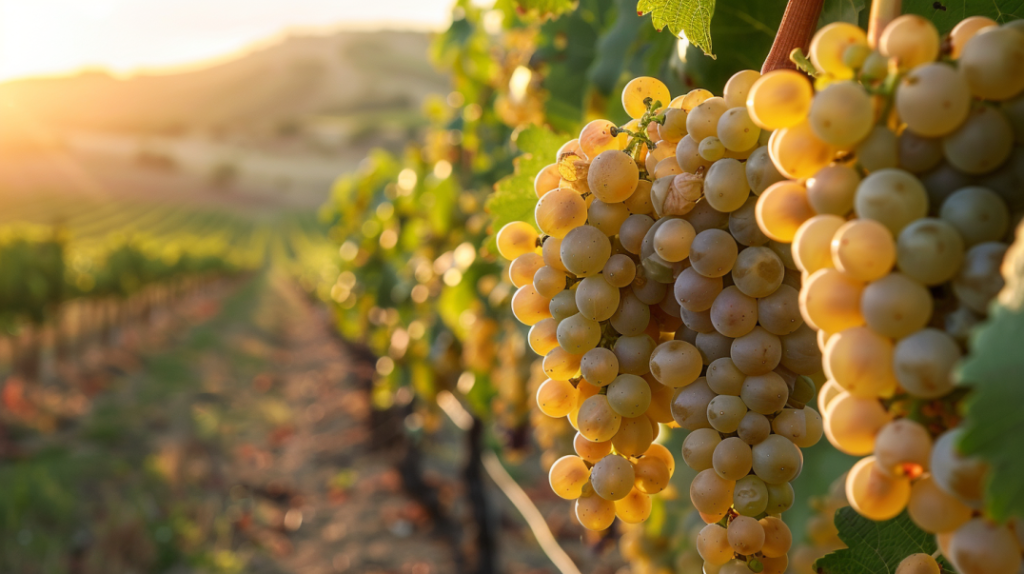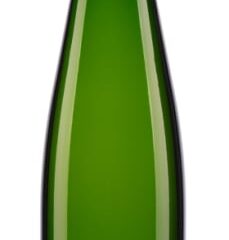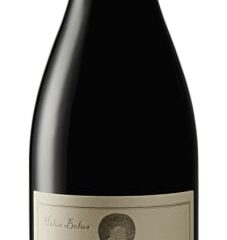Wine & Viticulture
Tsolikouri Wine: Ancient White Wine Tradition of Western Georgia

Introduction
Nestled in the picturesque landscapes of Western Georgia, the ancient grape variety known as Tsolikouri has been cultivated for centuries. This white grape, renowned for its unique characteristics and rich history, continues to be farmed using traditional methods, preserving its authentic essence. This story of Tsolikouri is not just about wine; it is a journey through time, culture, and the enduring spirit of Georgian viticulture.
The Origins of Tsolikouri
Tsolikouri: A Glimpse into Ancient Georgia
Tsolikouri, also spelled Tsitska-Tsolikouri, is one of Georgia’s oldest and most celebrated grape varieties. Its origins date back to ancient times, with evidence suggesting that it has been grown in the region for over a millennium. The grape variety is primarily cultivated in the Imereti region of Western Georgia, where the climate and soil conditions are ideal for its growth.

Tsolikouri grapes, Imereti region of Western Georgia, Niko Beridze
Unique Characteristics of Tsolikouri
The Distinctive Traits of Tsolikouri Grapes
Tsolikouri grapes are distinguished by their greenish-yellow hue and medium-sized berries. The vines thrive in the humid, subtropical climate of Western Georgia, benefiting from the fertile soils and moderate rainfall. This combination results in grapes that are well-balanced, offering a harmonious blend of acidity and sweetness.
Aromatic Profile and Flavor
The wines produced from Tsolikouri grapes are known for their aromatic profile, featuring notes of citrus, green apple, and floral undertones. The natural acidity of the grapes gives the wine a refreshing quality, making it a popular choice for both casual sipping and gourmet pairings.
Traditional Farming Methods
Preserving Tradition in Tsolikouri Cultivation
One of the most remarkable aspects of Tsolikouri is the traditional farming methods used to cultivate the vines. In Western Georgia, viticulture is not just an agricultural activity; it is a way of life that has been passed down through generations. Farmers employ age-old techniques that have been honed over centuries, ensuring the preservation of the grape’s unique characteristics.
Organic and Sustainable Practices
Georgian farmers place a strong emphasis on organic and sustainable farming practices. The use of chemical pesticides and fertilizers is minimal, with a preference for natural alternatives. This approach not only protects the environment but also enhances the quality of the grapes, resulting in wines that are free from harmful residues.
Hand-Harvesting
The harvesting of Tsolikouri grapes is a labor-intensive process that requires meticulous care. Grapes are hand-picked at the peak of ripeness, ensuring that only the best fruit is selected. This method allows farmers to carefully assess each bunch, maintaining the high standards that Tsolikouri wines are known for.
Traditional Winemaking Techniques
The Art of Winemaking with Tsolikouri
Once harvested, the grapes undergo traditional winemaking processes that have remained largely unchanged for centuries. In many cases, Tsolikouri wines are produced in clay vessels known as qvevri. These large, egg-shaped containers are buried underground, providing a natural and stable environment for fermentation and aging. The use of qvevri is a hallmark of Georgian winemaking and contributes to the distinct flavor profile of Tsolikouri wines.

Qvevri vessels, Georgia, Niko Beridze
The Cultural Significance of Tsolikouri
Tsolikouri: A Symbol of Georgian Heritage
In Georgia, wine is more than just a beverage; it is an integral part of the country’s cultural identity. Tsolikouri, with its ancient lineage and traditional farming methods, holds a special place in Georgian culture. It is often featured in local festivals and celebrations, symbolizing the enduring connection between the land and its people.
Wine Festivals and Traditions
Georgian wine festivals, such as the Rtveli harvest festival, provide a glimpse into the vibrant traditions surrounding Tsolikouri. During these events, communities come together to celebrate the grape harvest with music, dance, and, of course, wine. Tsolikouri wines are prominently featured, allowing locals and visitors alike to experience the rich heritage of Georgian viticulture.
Family and Community Bonds
The cultivation of Tsolikouri grapes fosters strong family and community bonds. Many vineyards are family-owned, with knowledge and skills passed down through generations. The collaborative nature of the harvest and winemaking process brings people together, reinforcing the sense of community that is so vital to Georgian culture.
Tsolikouri in the Modern Era
The Global Rise of Tsolikouri
While Tsolikouri remains deeply rooted in tradition, it has also adapted to the modern era. Today, the grape variety is gaining recognition on the international stage, attracting the attention of wine enthusiasts and connoisseurs from around the world.
Export and Global Recognition
In recent years, Tsolikouri wines have started to make their way onto the global market. Export efforts have increased, with wineries showcasing the unique qualities of this ancient grape variety to international audiences. The distinct flavor profile and traditional production methods of Tsolikouri wines have earned them a place in prestigious wine competitions and tastings.
Innovation and Experimentation
While traditional methods remain at the core of Tsolikouri cultivation, modern winemakers are also experimenting with new techniques to enhance the grape’s potential. This includes the use of stainless steel tanks for fermentation, which can highlight different aspects of the grape’s character. These innovations aim to strike a balance between preserving tradition and embracing progress.
Tasting Tsolikouri: A Sensory Journey
The Sensory Experience of Tsolikouri Wine
Experiencing Tsolikouri wine is a journey for the senses. Each sip offers a glimpse into the rich history and culture of Western Georgia, transporting the drinker to the lush vineyards and rustic cellars where the wine is made.
Visual Appeal
Tsolikouri wines typically display a bright, golden hue that is visually appealing. The clarity and color of the wine reflect the meticulous care taken during the winemaking process.
Aromatic Profile
The aromatic profile of Tsolikouri wines is one of their most captivating features. Expect a bouquet of citrus fruits, green apple, and subtle floral notes. These aromas are both inviting and complex, hinting at the layers of flavor that await.

Georgian Man Enjoying a glass of Tsolikouri wine, Kolkhida Lowland, 2024, Niko Beridze
Flavor and Finish
On the palate, Tsolikouri wines offer a refreshing balance of acidity and sweetness. The initial taste is often crisp and vibrant, with flavors of lemon, apple, and pear. As the wine develops in the mouth, more nuanced notes of honey and almond may emerge. The finish is typically clean and lingering, leaving a pleasant aftertaste that encourages another sip.
Pairing Tsolikouri with Food
Perfect Pairings: Tsolikouri and Cuisine
Tsolikouri wines are incredibly versatile when it comes to food pairings. Their balanced acidity and aromatic complexity make them an excellent companion to a wide range of dishes.
Seafood and Fish
The citrus and floral notes of Tsolikouri wines complement seafood and fish dishes beautifully. Whether it’s grilled fish, shrimp, or a delicate ceviche, the wine’s acidity enhances the flavors of the sea.
Poultry and White Meats
Tsolikouri’s subtle sweetness and refreshing profile also pair well with poultry and white meats. Think roasted chicken, turkey, or pork tenderloin, where the wine’s flavors can enhance the dish without overpowering it.
Cheese and Appetizers
For cheese lovers, Tsolikouri wines are a perfect match. Their versatility allows them to complement both mild and slightly tangy cheeses, making them an excellent choice for cheese platters and appetizers.
Conclusion: The Timeless Appeal of Tsolikouri
Tsolikouri from Western Georgia is more than just a grape variety; it is a testament to the enduring legacy of Georgian viticulture. The traditional farming methods, cultural significance, and unique characteristics of Tsolikouri wines make them a cherished part of Georgia’s heritage. As this ancient grape continues to gain recognition on the global stage, it remains a symbol of the timeless appeal of Georgian wine.
Whether you are a seasoned wine enthusiast or a curious newcomer, exploring Tsolikouri offers a chance to connect with the rich history and vibrant culture of Western Georgia. With each glass, you can experience the tradition, craftsmanship, and passion that go into every bottle of Tsolikouri wine. Cheers to the enduring spirit of Tsolikouri and the timeless allure of Georgian viticulture.
FAQs
What makes Tsolikouri grapes unique?
Tsolikouri grapes are known for their greenish-yellow hue, medium-sized berries, and balanced blend of acidity and sweetness, thriving in the subtropical climate of Western Georgia.
How are Tsolikouri grapes traditionally harvested?
Tsolikouri grapes are hand-picked at the peak of ripeness, ensuring only the best fruit is selected, maintaining high standards for the wine.
What is qvevri winemaking?
Qvevri winemaking involves fermenting and aging wine in large clay vessels buried underground, a traditional Georgian method that contributes to Tsolikouri’s unique flavor profile.
How does Tsolikouri wine taste?
Tsolikouri wine has a refreshing balance of acidity and sweetness, with flavors of citrus, green apple, and subtle floral notes, often followed by nuanced hints of honey and almond.
Why is Tsolikouri significant in Georgian culture?
Tsolikouri holds a special place in Georgian culture, symbolizing the enduring connection between the land and its people, and is featured in local festivals and celebrations.
How has Tsolikouri adapted to the modern era?
Tsolikouri has gained international recognition through exports and innovations in winemaking, balancing traditional methods with modern techniques?
Learn more about the history of Georgian wine at Wine Folly.
- Discover the traditional winemaking techniques using qvevri at Smithsonian Magazine.
- Explore the cultural significance of the Rtveli harvest festival on Georgian Wine Association.
- For an in-depth look at organic and sustainable farming practices in Georgia, visit Organic Wine Journal.
- Find Tsolikouri wines on the global market through Wine-Searcher.
-

 Wine Industry News4 months ago
Wine Industry News4 months agoMajor Wine Mergers and Acquisitions in 2024: A Year of Strategic Consolidation
-

 Wine Reviews4 months ago
Wine Reviews4 months agoReview of Jam Jar Sparkling Sweet Red NV
-

 Wine Collecting4 months ago
Wine Collecting4 months agoRecommended Apps for Tracking Your Wine Inventory
-

 Wine Industry News5 months ago
Wine Industry News5 months agoWelcome to Wine Savvy Magazine
-

 Wine Reviews5 months ago
Wine Reviews5 months agoReview of Francis Ford Coppola Cabernet Sauvignon
-

 Wine Reviews4 months ago
Wine Reviews4 months agoReview of Apollo’s Praise Riesling 2024
-

 Wine Reviews4 months ago
Wine Reviews4 months agoReview of Jam Jar Sweet White Moscato – 2021 Vintage
-

 Wine Reviews4 months ago
Wine Reviews4 months agoMass Production Over Mastery: A Critical Review of Barefoot Bubbly Pink Moscato California Champagne NV













